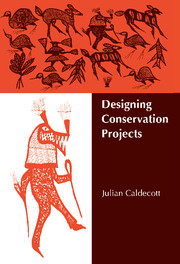Book contents
- Frontmatter
- Contents
- Foreword by Daniel H. Janzen
- Preface
- Acknowledgements
- 1 Introduction
- 2 Baram River, Sarawak
- 3 Cross River, Nigeria
- 4 Siberut and Flores Islands, Indonesia
- 5 Forest fragments in China and the Philippines
- 6 Costa Rican linkage projects
- 7 Irian Jaya, Indonesian New Guinea
- 8 Project themes and practicalities
- 9 Options for conservation
- 10 Options for development
- 11 Options for changing people's minds
- 12 Summary and conclusions
- Glossary
- Bibliography
- Index
9 - Options for conservation
Published online by Cambridge University Press: 04 February 2010
- Frontmatter
- Contents
- Foreword by Daniel H. Janzen
- Preface
- Acknowledgements
- 1 Introduction
- 2 Baram River, Sarawak
- 3 Cross River, Nigeria
- 4 Siberut and Flores Islands, Indonesia
- 5 Forest fragments in China and the Philippines
- 6 Costa Rican linkage projects
- 7 Irian Jaya, Indonesian New Guinea
- 8 Project themes and practicalities
- 9 Options for conservation
- 10 Options for development
- 11 Options for changing people's minds
- 12 Summary and conclusions
- Glossary
- Bibliography
- Index
Summary
Introduction
Project areas are clearly bounded regions within countries, or at least have to be defined and mapped as such in project documents. Each project area will contain a number of actual or potential zones, based on features of terrain, ecology, or human use of resources. Conservation projects must address the needs both of wild species and of people, so when they are designed the focus will switch back and forth between the most important zone for biodiversity (the nature reserve), and the most important area for solving problems (the surrounding area where people live). This chapter reviews some of the options for managing the various zones which comprise nature reserves themselves. The next chapter complements this by focussing on the options for managing the rest of the project area.
Choosing nature reserves
There is no single objective way to measure the importance of the various components of biodiversity, or to choose priorities for managing them, since these actions depend on the aims of those doing the measuring and choosing. The aim of preserving genetic variability among crop plants, for example, yields different priorities from the aim of preserving wildlife for viewing by tourists. For the purposes of this book, however, it is assumed that the primary aim of a conservation project is to preserve as many species as possible in the short to medium term, while seeking ways to resolve threats to them in the long term. People who propose or design such projects should therefore be guided by the distribution of native and particularly endemic species, and should emphasize protection of areas which are rich in species and endemics.
- Type
- Chapter
- Information
- Designing Conservation Projects , pp. 181 - 200Publisher: Cambridge University PressPrint publication year: 1996



